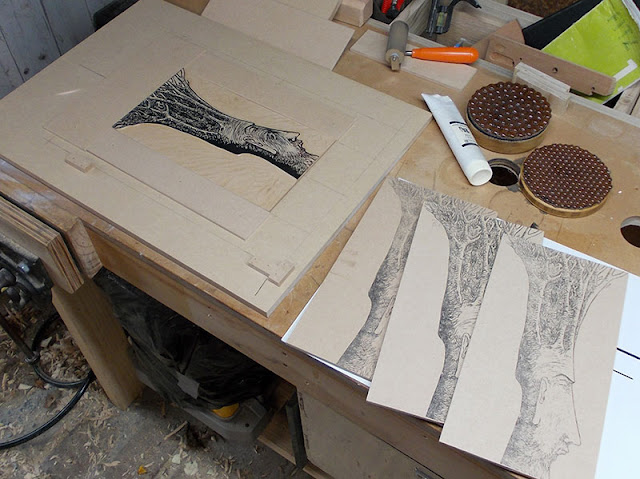I've figured out a way of getting properly registered colour separations (and, eventually, prints).
I've built a frame on a piece of MDF which closely surrounds the block on three sides. Outside that frame are registration tabs to set the paper into, so the paper and block are always in exactly the same place, relative to each other. All the blocks are precisely the same size, so it works for all of them.
The frame around the block is the same thickness as the MDF I've cut the block from, which means that there's a support for the baren to run on to — that helps to keep it out of the voids, and it also means that it's less likely to shift the block by pressing against an outside edge. There's a floating piece, not attached, that I put across the right-hand edge after the block is in place for the same purpose.
The colour block guide prints are created by an offset printing process. The key block (the one in the frame in this photo) is printed on to a sheet of mylar, registered in the paper registration tabs. Then it and the key block are removed, one of the colour blocks put into the frame, and the mylar replaced against the registration tabs, and rubbed down against the fresh block with a rubber brayer (roller). That transfers a reversed image of the key block in perfect registration, and I can use that image to guide me in cutting the colour block.
I've put up a cheap portable washing line in my workshop that I can use for drying prints. These ones are on A3 sheets, and I figure I could get about 30 up there before they started to interfere with my printing area. I'm unlikely to be doing any large runs, so that should be plenty.


No comments:
Post a Comment